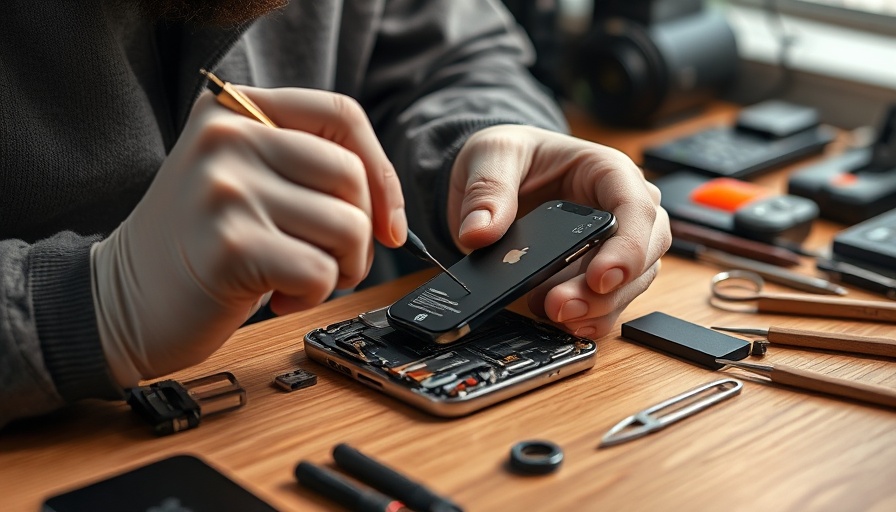
Electric Revolution: How Battery Repairs Became Simpler
The shift in iPhone design and repairability can often seem far removed from the demands of everyday life for a digital nomad. Yet, advancements like those seen in the iPhone 16 lineup, particularly its innovative battery repair process, can have profound implications on productivity and sustainability.
Traditional battery replacements in smartphones often entail navigating a minefield of adhesives and delicate components. Most smartphones use tough glues that require specialized tools to remove batteries, often frustrating users or pushing them toward professional repair shops. In light of this, Apple’s introduction of electrically activated adhesive in the iPhone 16, 16 Plus, and 16e marks a notable shift in repair strategy. This new adhesive allows batteries to be detached safely after applying an electrical current for a few seconds, revolutionizing the DIY repair process.
Sustainability and Cost-Efficiency: The Upsides of Easy Repairs
Replacing a degraded lithium-ion battery used to be a painful process—often leading to either sacrifices in performance or incurring significant costs. This change not only screams convenience but underlines a paradigm shift in making devices more sustainable. For digital nomads conscious of their environment, maintaining devices for longer periods significantly reduces electronic waste.
With the new battery adhesive, users now have a more accessible way to revive their smartphones without the need to replace the entire device—saving money and fostering a culture of resourcefulness that empowers flexibility in work environments.
Responding to Regulations or Genuine User Needs?
It’s been suggested that Apple's move to adopt these repair-friendly adhesives relates significantly to upcoming EU regulations mandating replaceable batteries by 2027. While it’s plausible that regulation sparked this change, it's wise to acknowledge that consumer demand has played a crucial role in driving the tech industry towards making devices more repairable.
This dual impetus—regulatory pressure and user feedback—is creating a tech landscape where products are more responsive to the needs of users. For anyone regularly on the move, this shift means fewer interruptions and more time spent efficiently managing tasks.
Counterarguments: The Challenges of DIY Repair
Despite the innovations, some experts remain skeptical of battery replacements emerging as the go-to solution for device longevity. Critics argue that while electrically activated adhesive simplifies battery removals, complexities still exist—especially for individuals unfamiliar with the process. For digital nomads accustomed to efficient methods, missteps in battery maintenance can be inconvenient, if not detrimental, to productivity.
Moreover, while the design improvements reflect significant progress, upcoming models like the iPhone 16 Pro and Pro Max still utilize traditional adhesive, leaving a gap that some tech-savvy users may find troubling. The inconsistency in repairability across models reveals an ongoing challenge for Apple as they work towards universal standards in maintenance.
The Intersection of Innovation and Accessibility
The iPhone 16’s new electrified adhesive represents a notable intersection of technology and user-experience enhancement. In a practical sense, this means more accessible repairs without specialized skills—an appealing element for a demographic that values independence and efficiency.
Accessibility to quality repair guides and tools is equally important. Apple’s proactive approach in releasing repair manuals on launch day suggests a commitment towards transparency and empowering users. This makes a difference for digital nomads looking to extend the life of their devices while on the go.
Embracing Change: New Perspectives on Device Repair
The evolution in battery replacements isn’t merely a technical advancement; it serves as an invitation to rethink how we approach device management in our increasingly mobile lives. For digital nomads, understanding these innovations fosters a deeper appreciation for the devices they rely on daily and how to manage them sustainably.
As this culture of repair gains traction, the implications stretch far beyond individual convenience—impacting everything from resource consumption to product lifespan.
 Add Row
Add Row  Add
Add 




Write A Comment